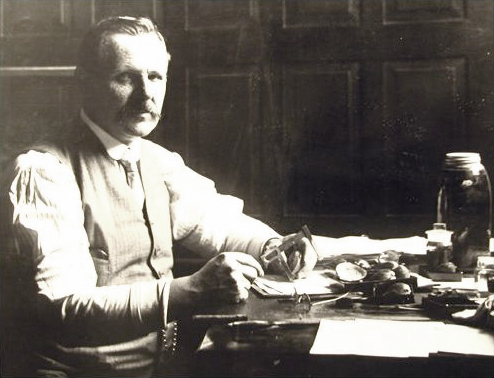|
Processidae
The Processidae are a family of shrimp, comprising 65 species in five genera, and the only family in the superfamily Processoidea. They are small, nocturnal animals, mostly living in shallow seas, particularly on grass flats. The first pereiopods are usually asymmetrical, with a claw on one, but not the other ('' Ambidexter'' forming the exception to this rule). The rostrum is generally a simple projection from the front of the carapace A carapace is a Dorsum (biology), dorsal (upper) section of the exoskeleton or shell in a number of animal groups, including arthropods, such as crustaceans and arachnids, as well as vertebrates, such as turtles and tortoises. In turtles and tor ..., with two teeth, one at the tip, and one further back. References Caridea Decapod families Taxa named by Arnold Edward Ortmann {{Caridea-stub ... [...More Info...] [...Related Items...] OR: [Wikipedia] [Google] [Baidu] |
Ambidexter (genus)
{{Disambiguation ...
Ambidexter may refer to: *Ambidexterity, the state of being equally adept in the use of both left and right appendages, usually the hands * Ambidexter (horse), a British thoroughbred horse * ''Ambidexter'' (genus), a type of shrimp in family Processidae The Processidae are a family of shrimp, comprising 65 species in five genera, and the only family in the superfamily Processoidea. They are small, nocturnal animals, mostly living in shallow seas, particularly on grass flats. The first pereiopods ... [...More Info...] [...Related Items...] OR: [Wikipedia] [Google] [Baidu] |
Nikoides
The Nikoides are a genus in the Processidae family of shrimp, first described in 1875 by Otton Mikhailovich Paulson.Paul'son, O.M. 1875Studies on Crustacea of the Red Sea with Notes regarding other Seas. Part I. Podophthalmata and Edriophthalmata (Cumacea) Jerusalem : The Israel Program for Scientific Translations 164 pp. 21 pls. In Australia it is found off the northern coasts of Western Australia, the Northern Territory, and Queensland. Species accepted by WoRMS are: * ''Nikoides boraboraensis'' Burukovsky, 2002 * ''Nikoides danae'' Paulson, 1875 * ''Nikoides gurneyi'' Hayashi, 1975 * ''Nikoides longicarpus'' Noël, 1986 * ''Nikoides maldivensis'' Borradaile, 1915 * ''Nikoides multispinatus'' Hayashi, 1981 * ''Nikoides plantei'' Burukovsky, 2007 * ''Nikoides schmitti'' Manning & Chace, 1971 * ''Nikoides sibogae'' De Man, 1918 * ''Nikoides steinii'' (Edmondson, 1935) * ''Nikoides subdistalis The Nikoides are a genus in the Processidae family of shrimp, first described in 18 ... [...More Info...] [...Related Items...] OR: [Wikipedia] [Google] [Baidu] |
Caridea
The Caridea, commonly known as caridean shrimp or true shrimp, are an infraorder of shrimp within the order Decapoda. This infraorder contains all species of true shrimp. They are found widely around the world in both fresh and salt water. Many other animals with similar names – such as the mud shrimp of Axiidea and the boxer shrimp of Stenopodidea – are not true shrimp, but many have evolved features similar to true shrimp. Biology Carideans are found in every kind of aquatic habitat, with the majority of species being marine. Around a quarter of the described species are found in fresh water, however, including almost all the members of the species-rich family Atyidae and the Palaemonidae subfamily Palaemoninae. They include several commercially important species, such as ''Macrobrachium rosenbergii'', and are found on every continent except Antarctica. The marine species are found at depths to , and from the tropics to the polar regions. In addition to the great variety in ... [...More Info...] [...Related Items...] OR: [Wikipedia] [Google] [Baidu] |
Arnold Edward Ortmann
Arnold Edward Ortmann (April 8, 1863 – January 3, 1927) was a Prussian-born United States naturalist and zoologist who specialized in malacology. Biography Ortmann was born in Magdeburg, Prussia on April 8, 1863. A student of Ernst Haeckel, he graduated from the University of Jena in 1885 with a Ph.D.; he had also studied at the University of Kiel and the University of Strasbourg. From 1886 on, he worked as an instructor at the University of Strasbourg. Together with Haeckel, he participated in an expedition to Zanzibar in 1890/91. Three years later, he emigrated to the United States, where he got a post as the curator of the department of invertebrate paleontology at Princeton University. In 1899, he participated in the Peary Relief expedition, and one year later, he was naturalized as a U.S. citizen. In 1903, he moved to Pittsburgh. He became the curator of invertebrate zoology at the Carnegie Museum and from 1910 on, he was professor of physical geography at the Univers ... [...More Info...] [...Related Items...] OR: [Wikipedia] [Google] [Baidu] |

